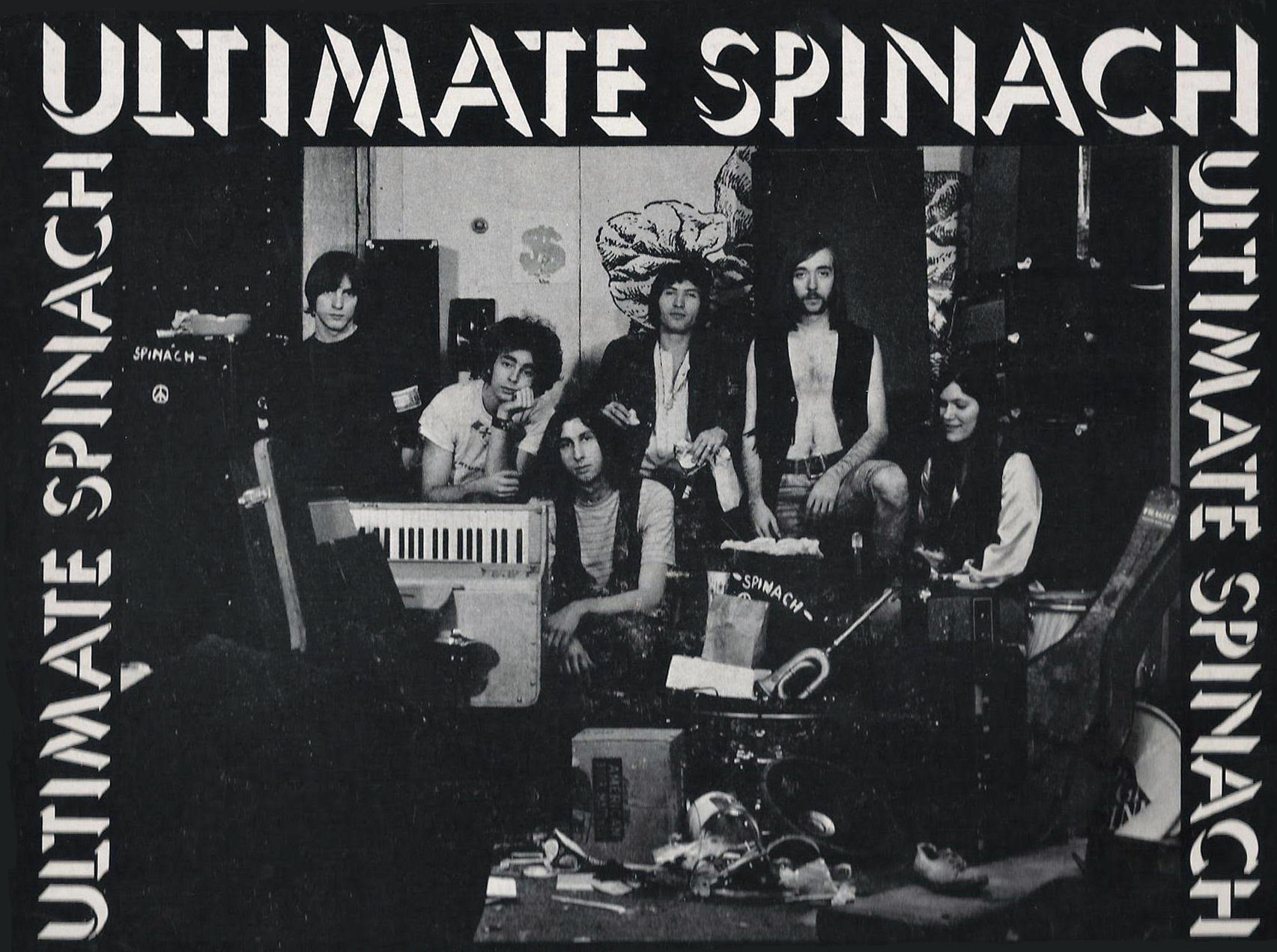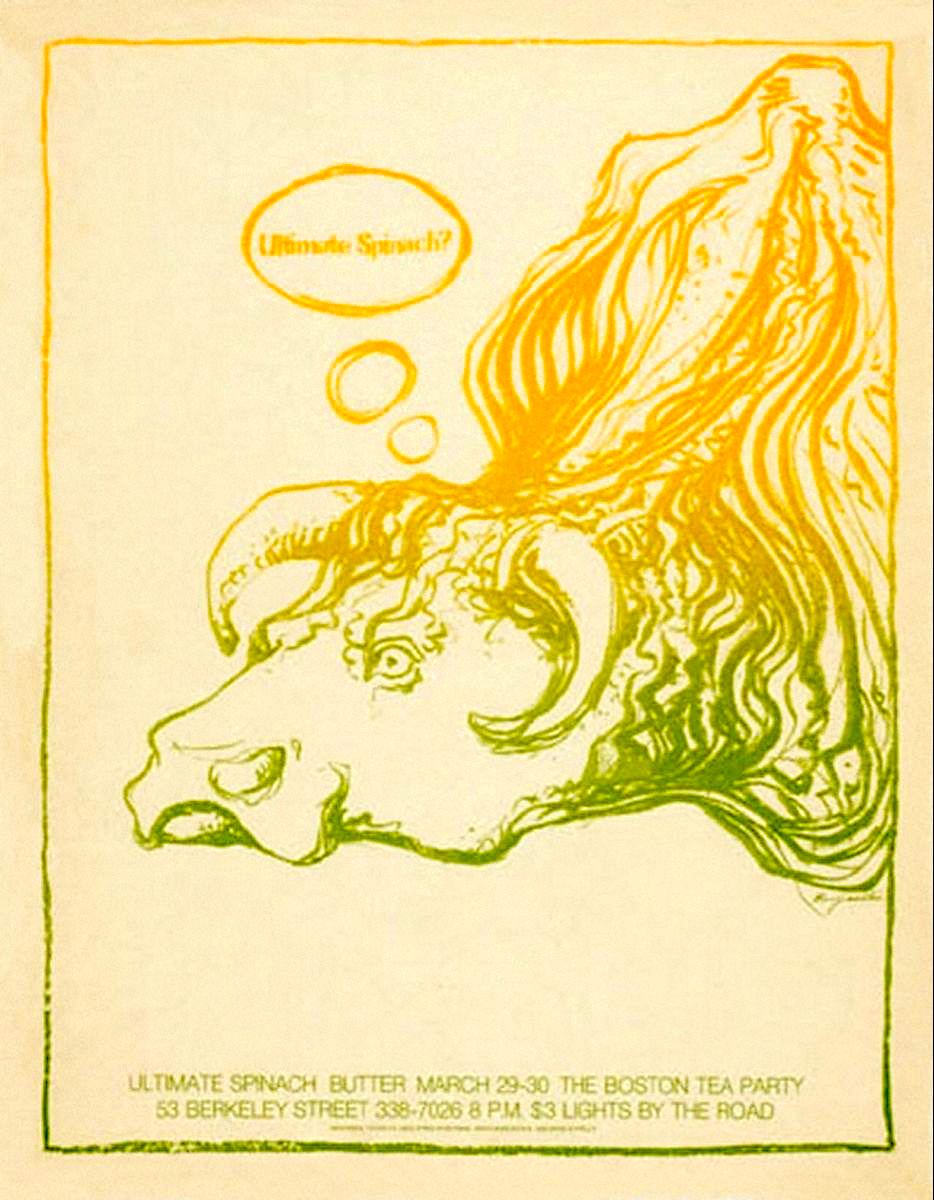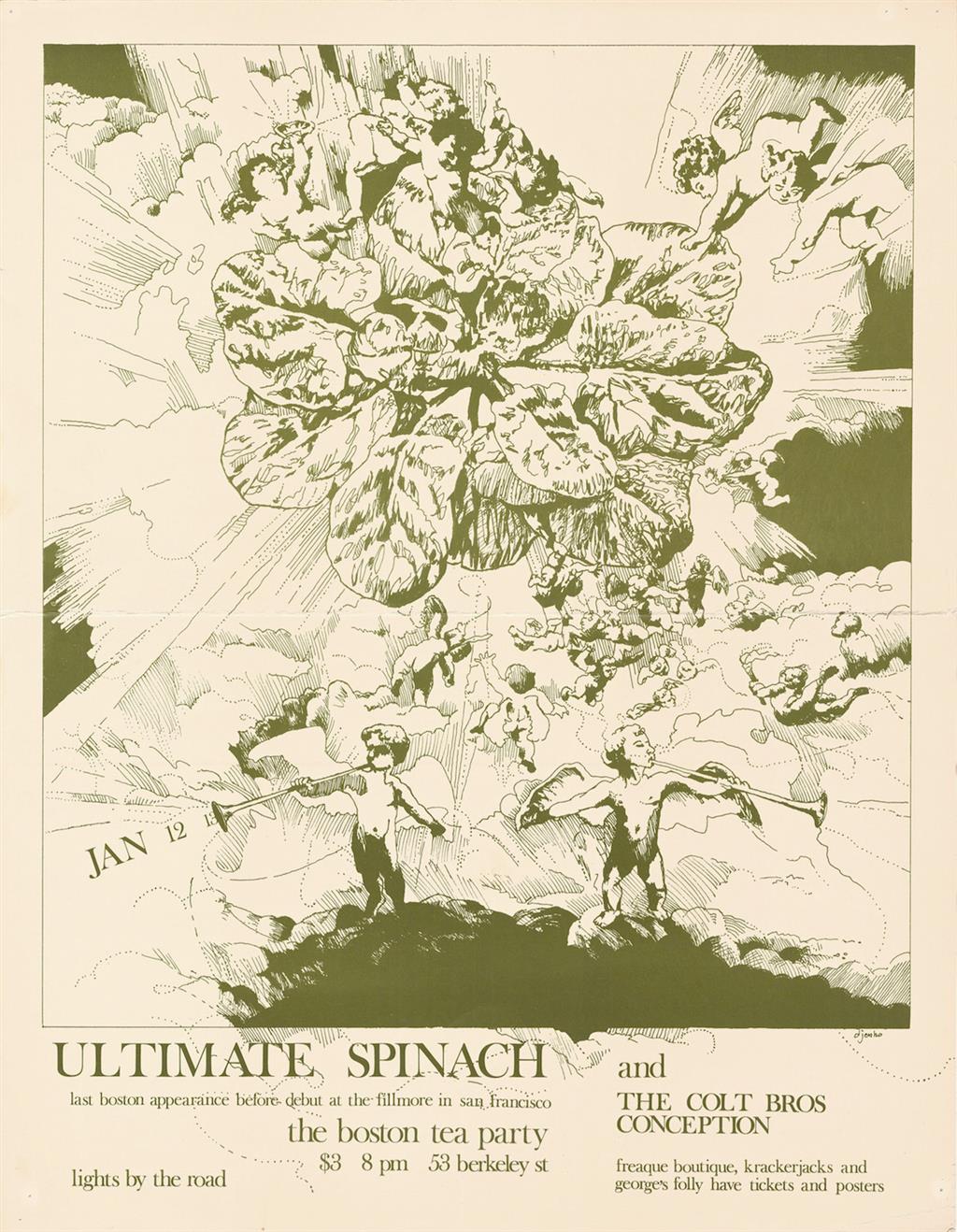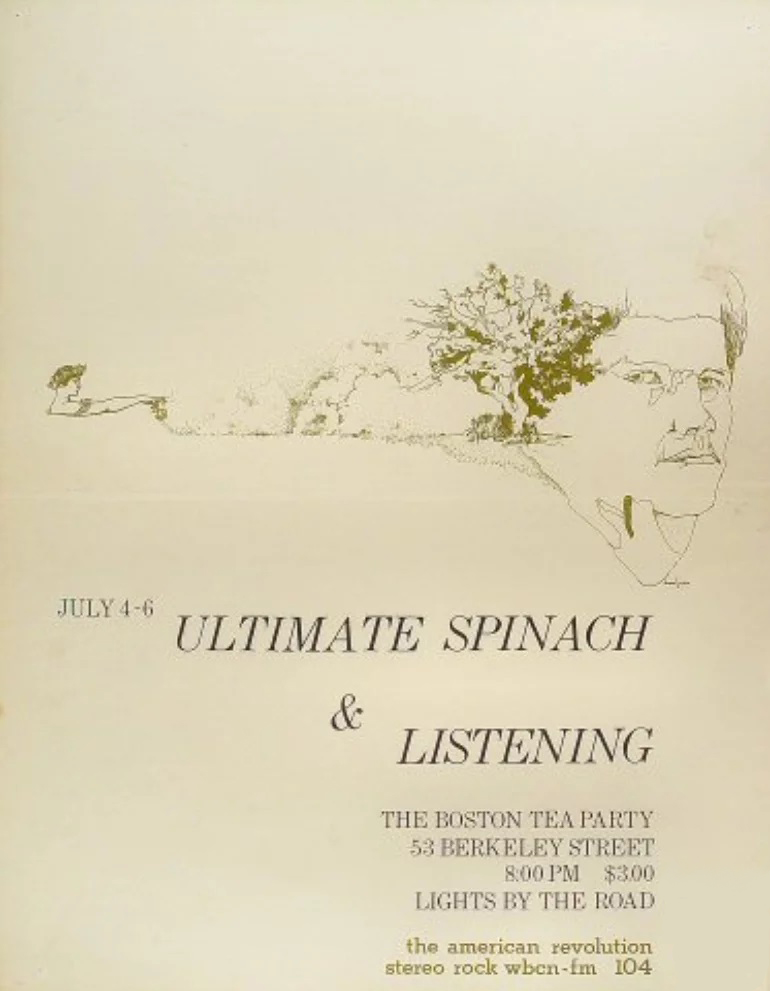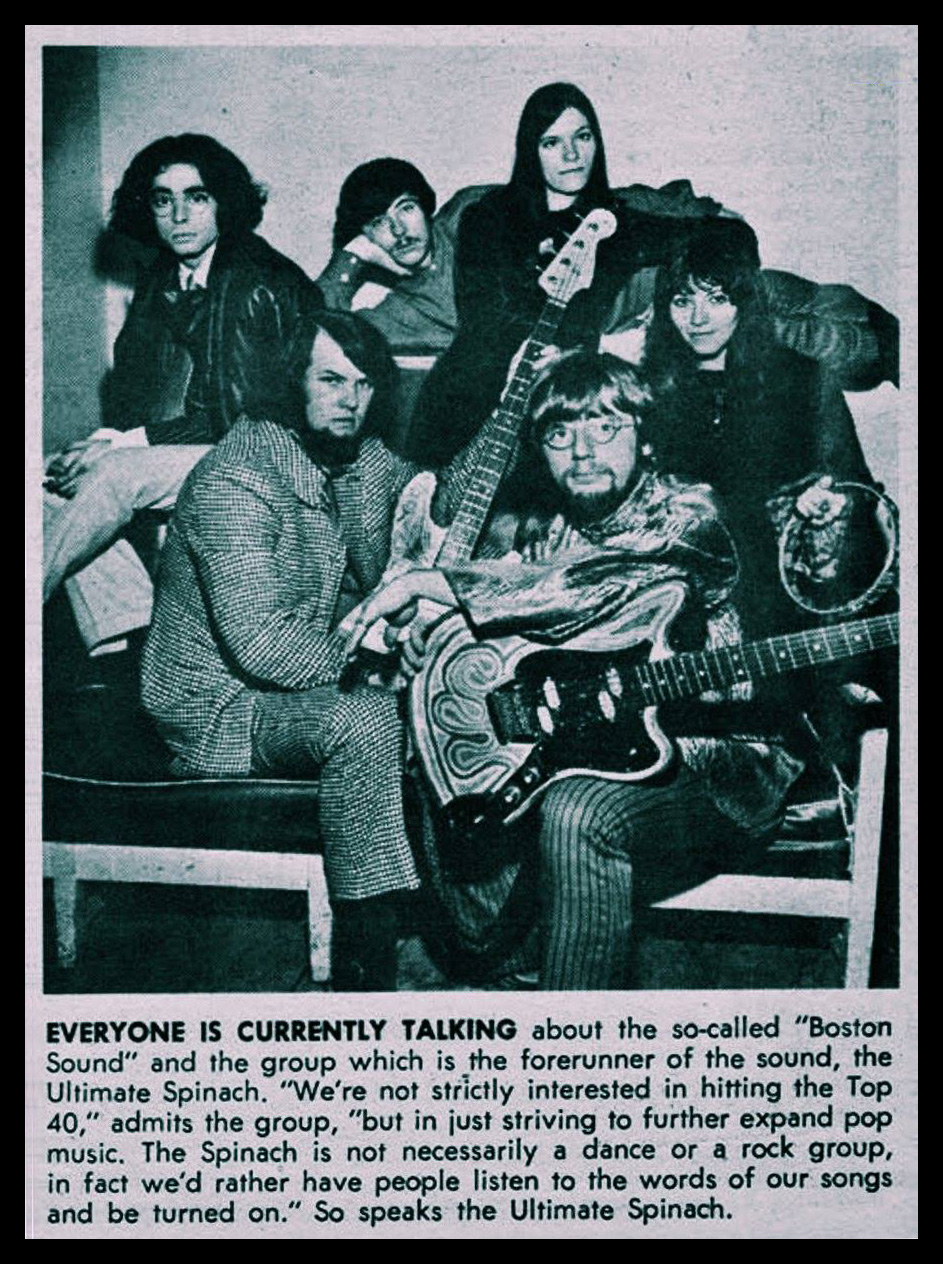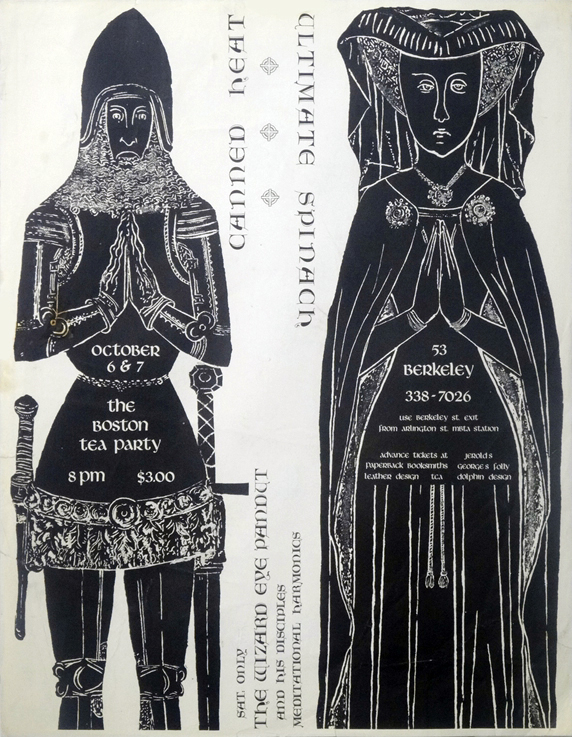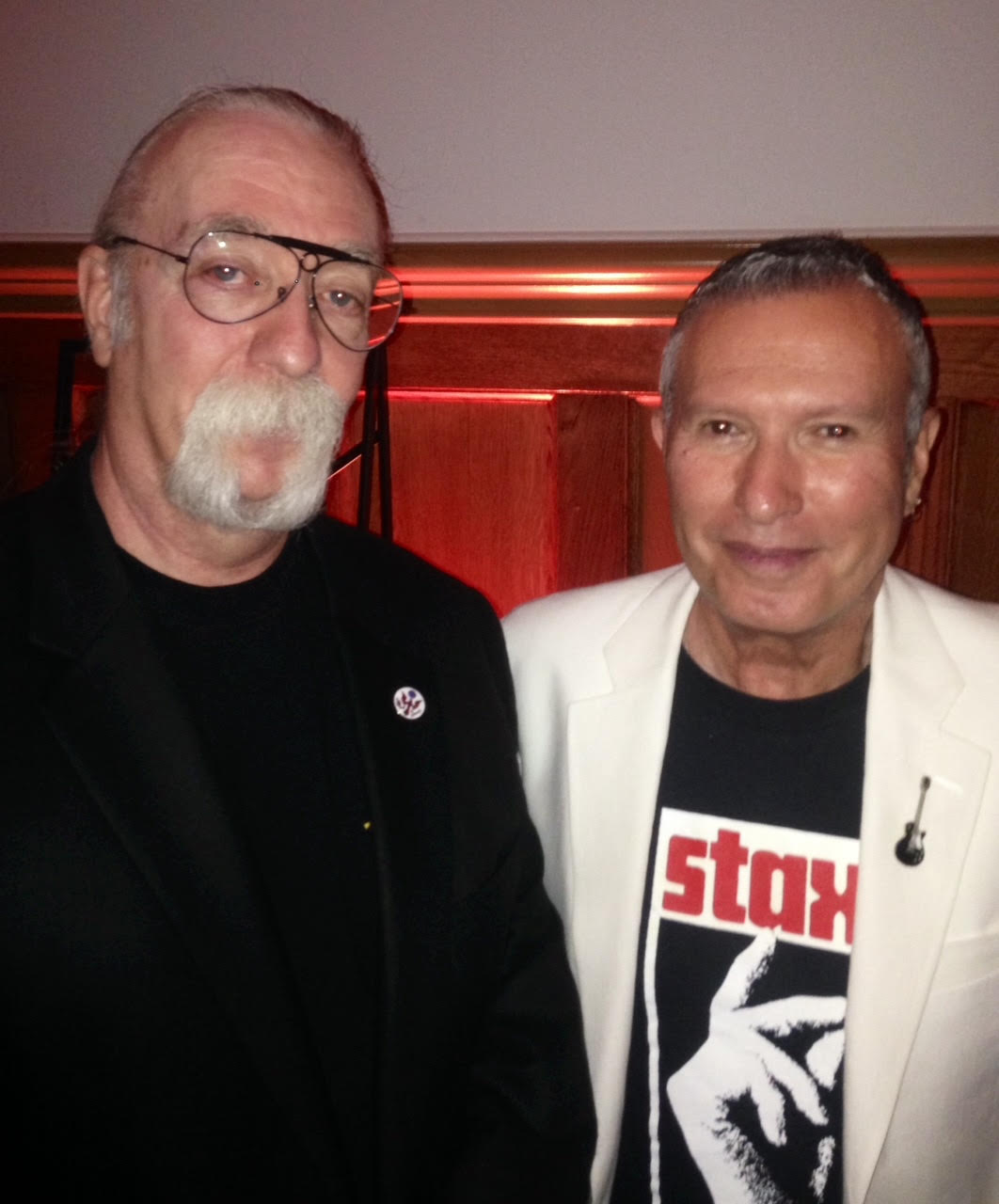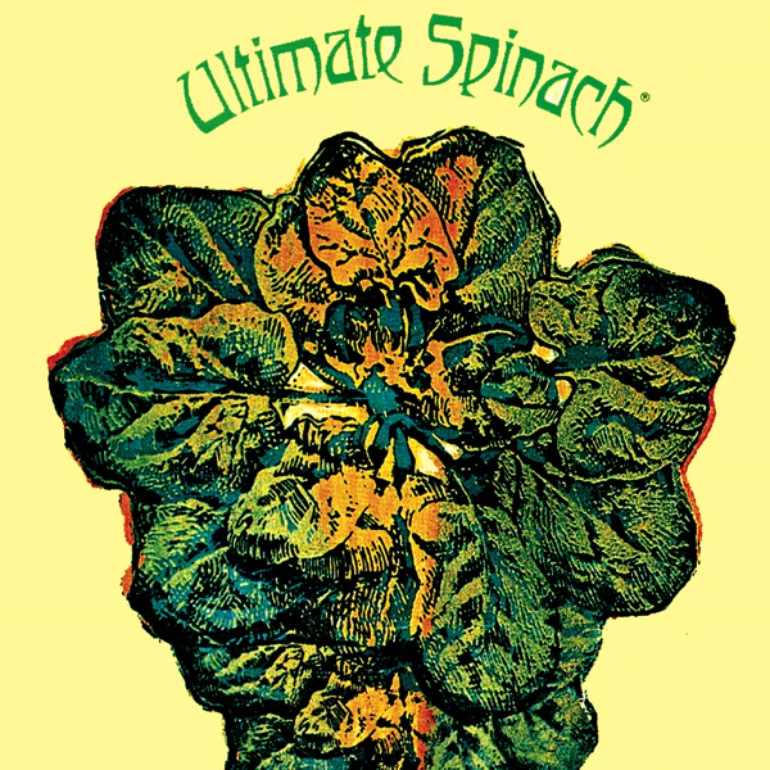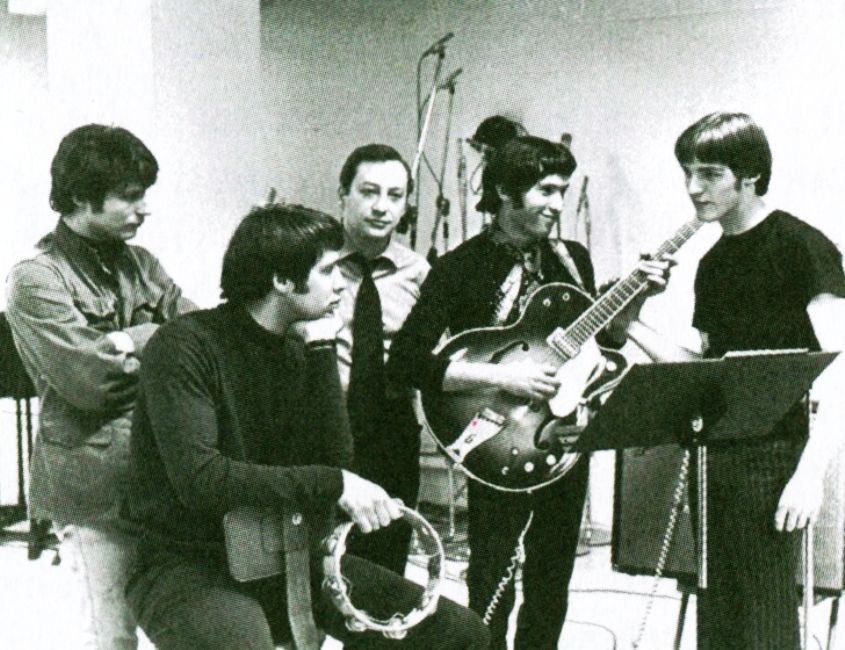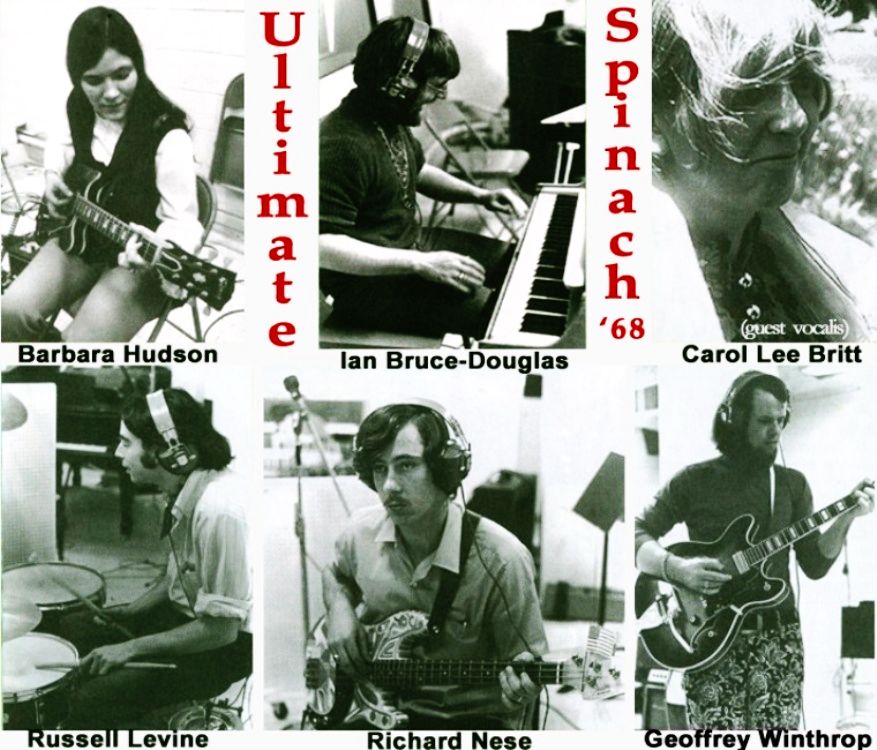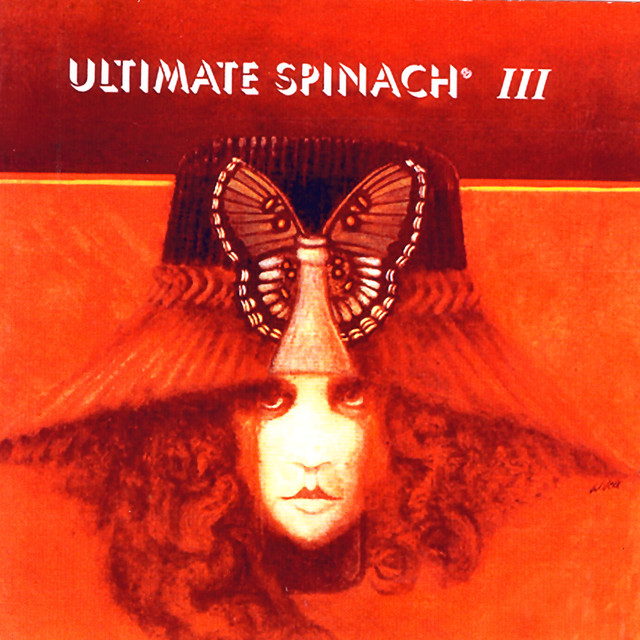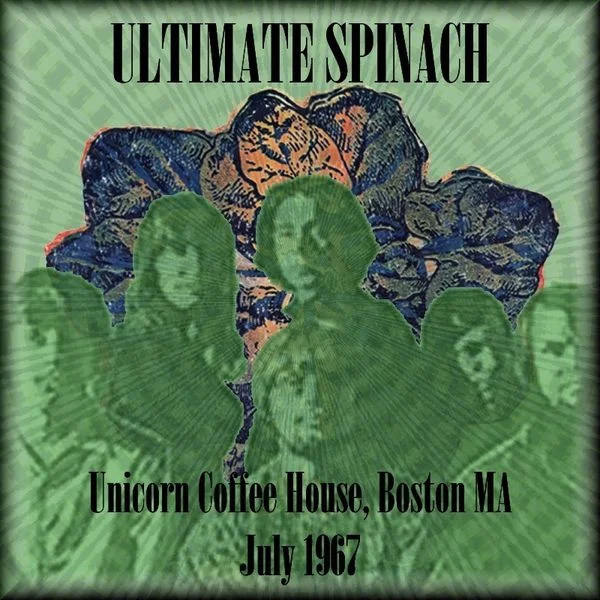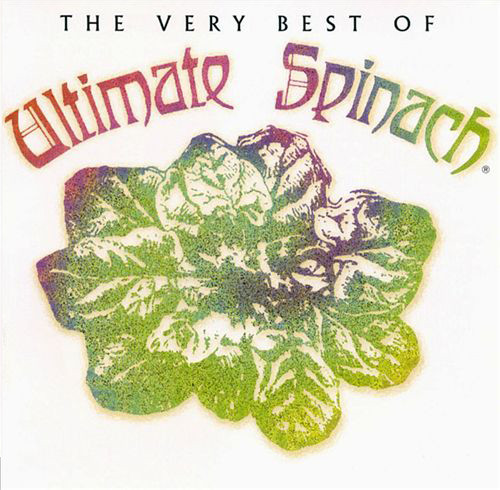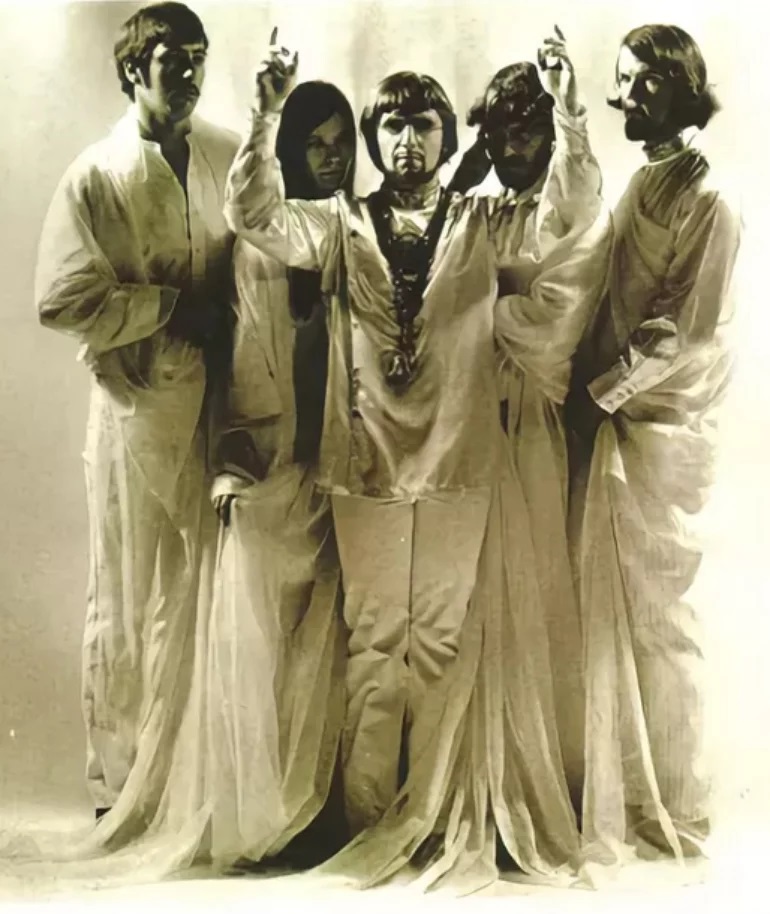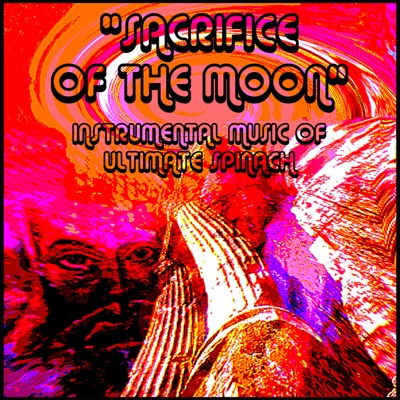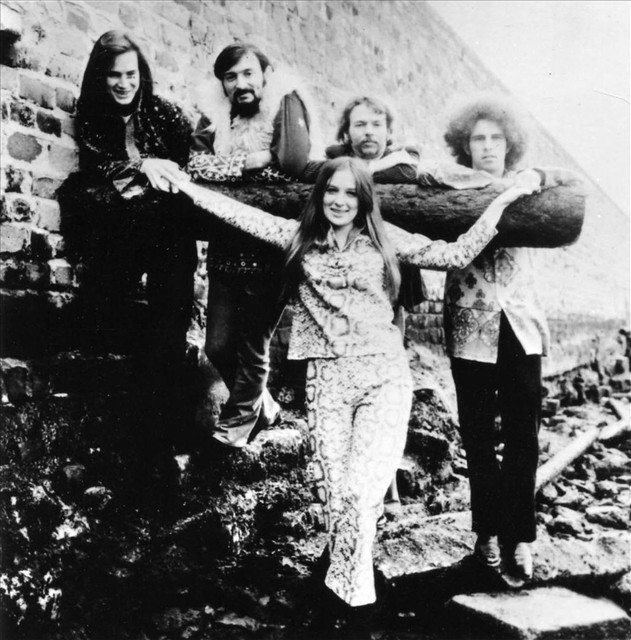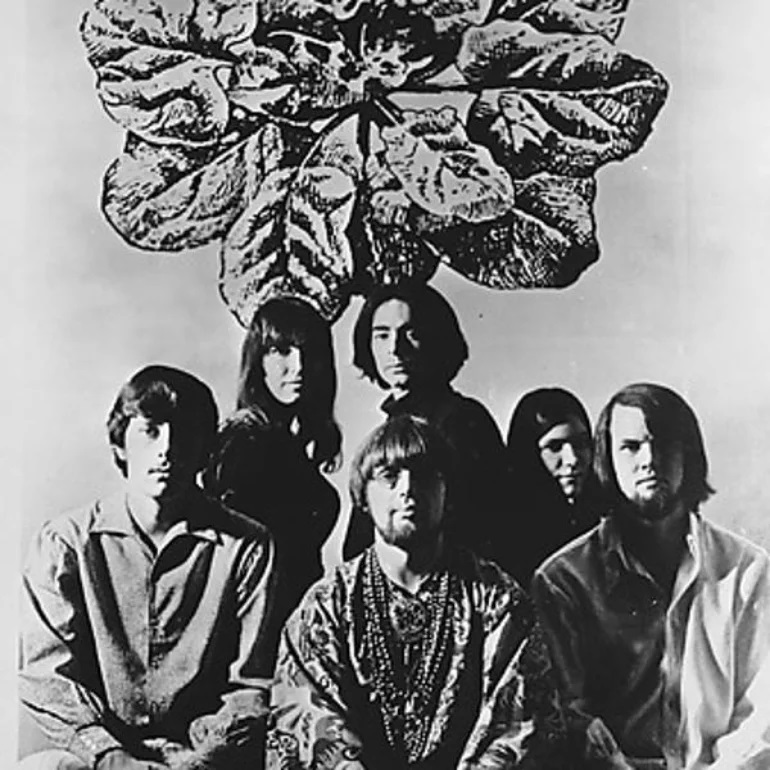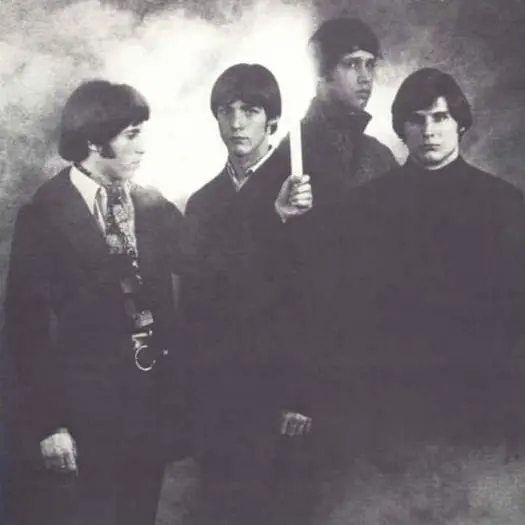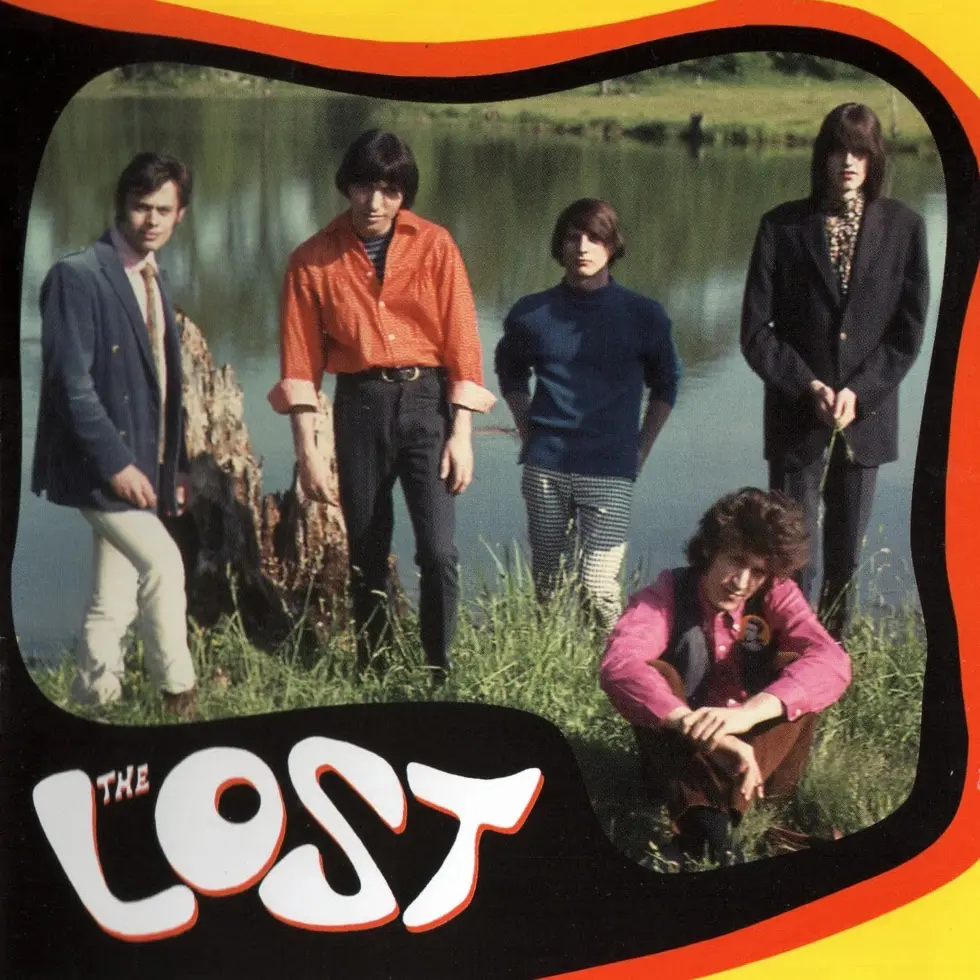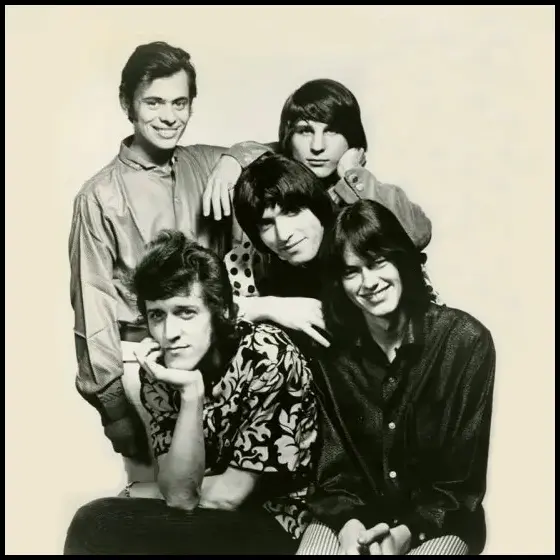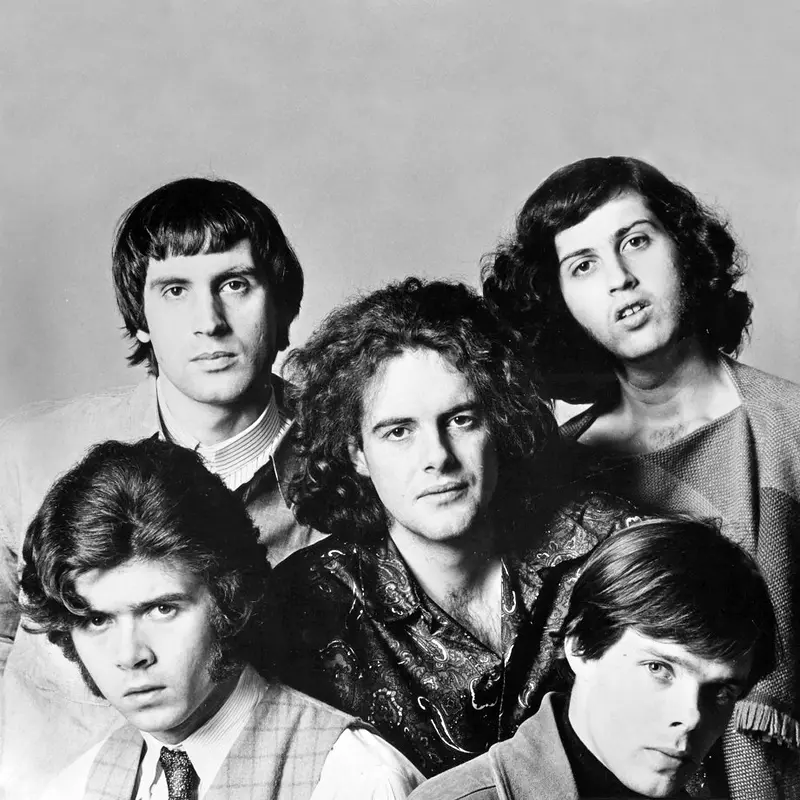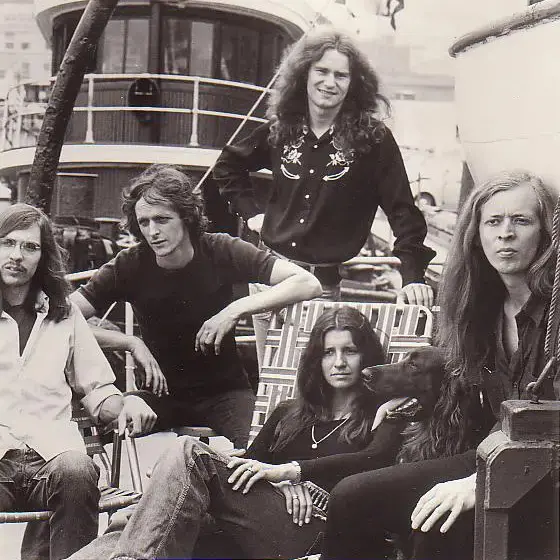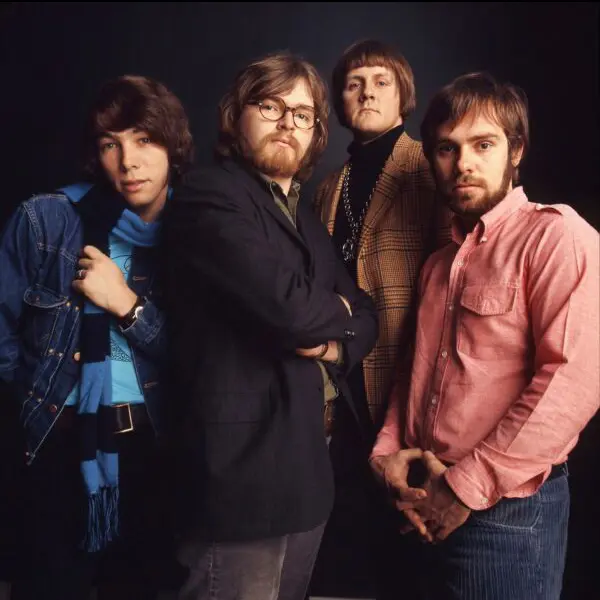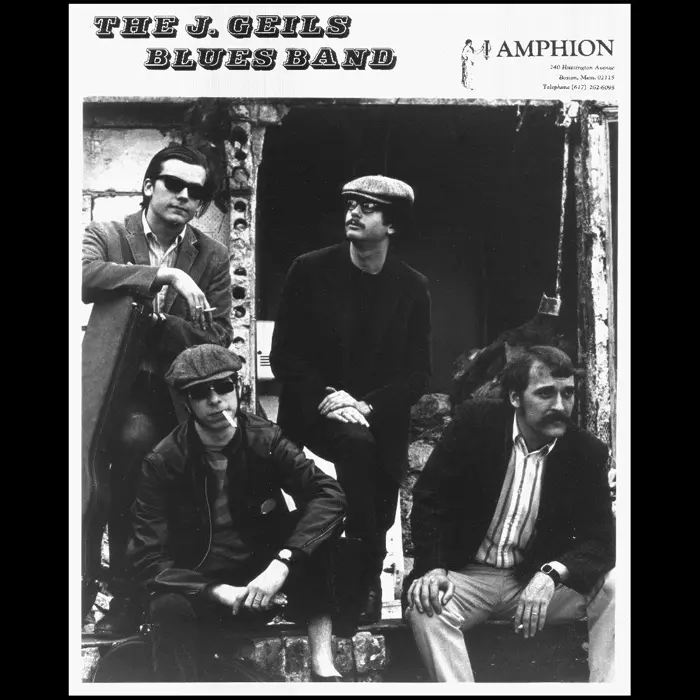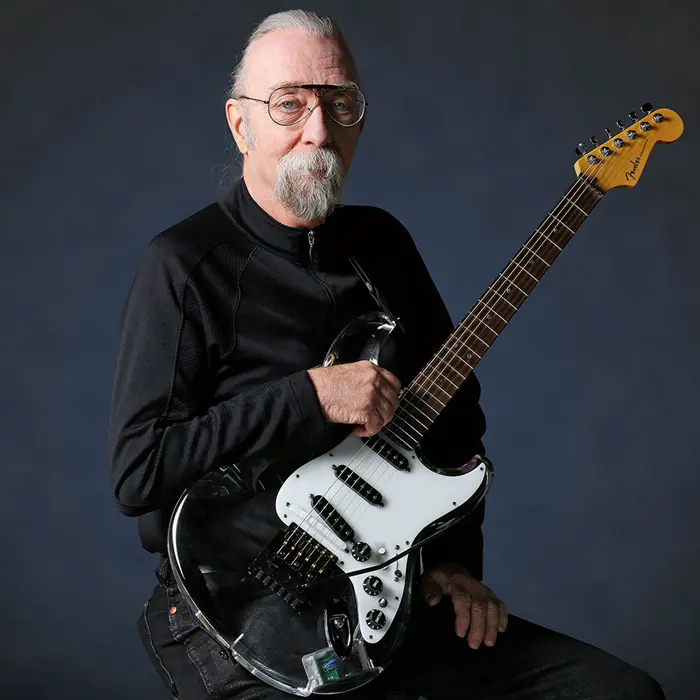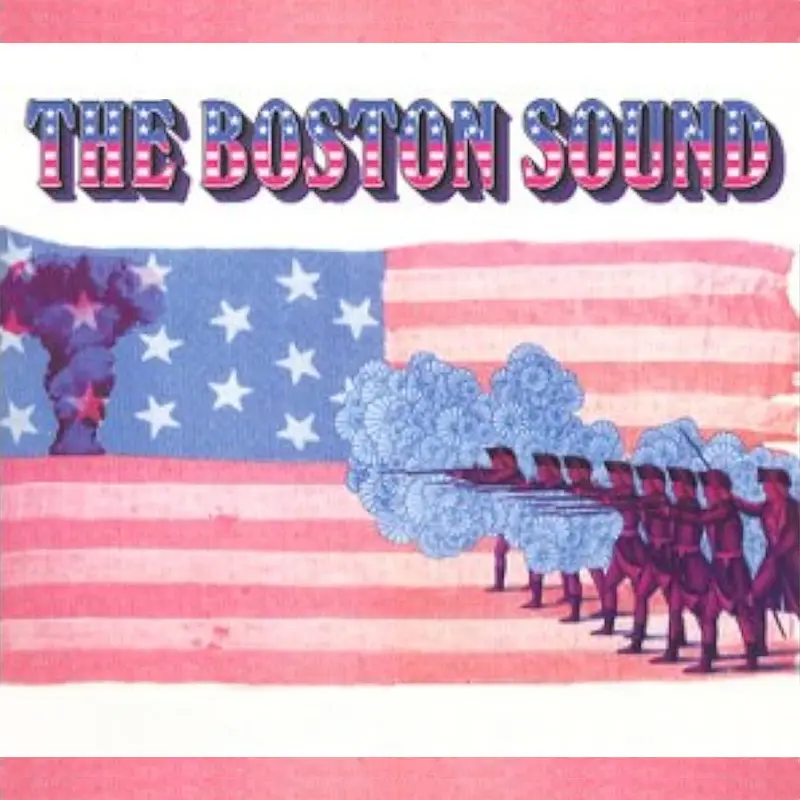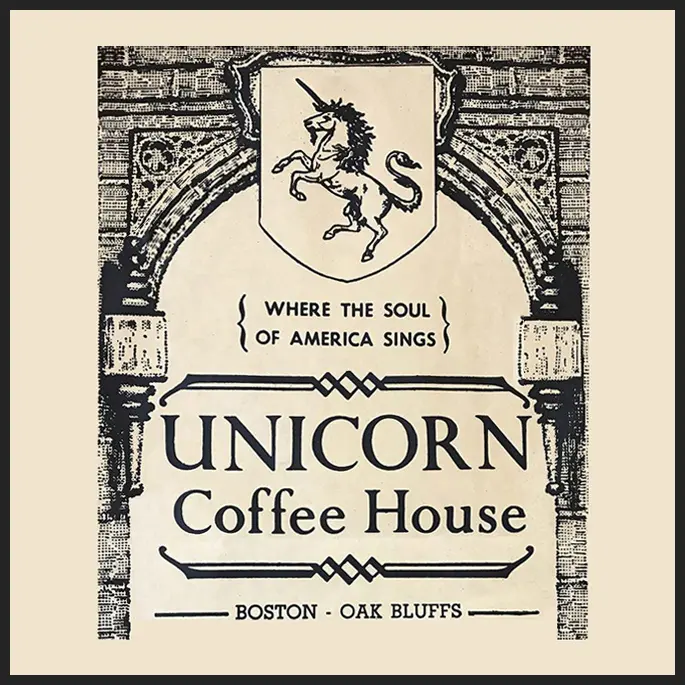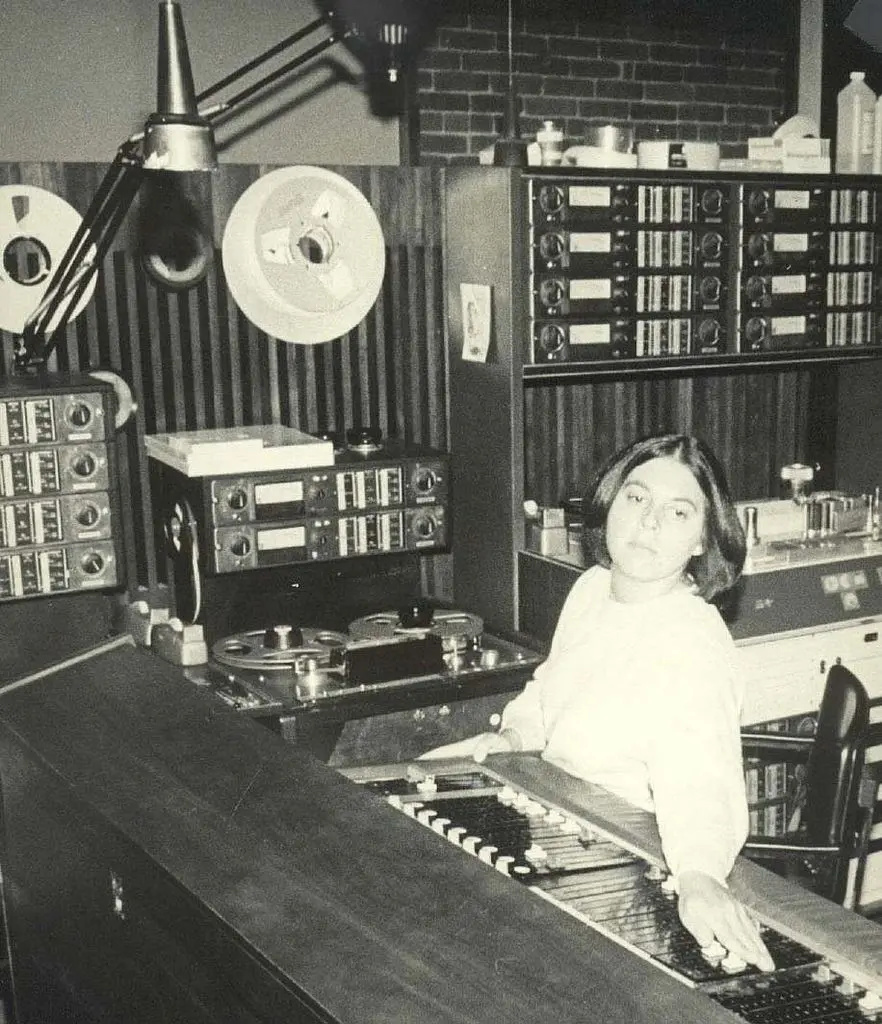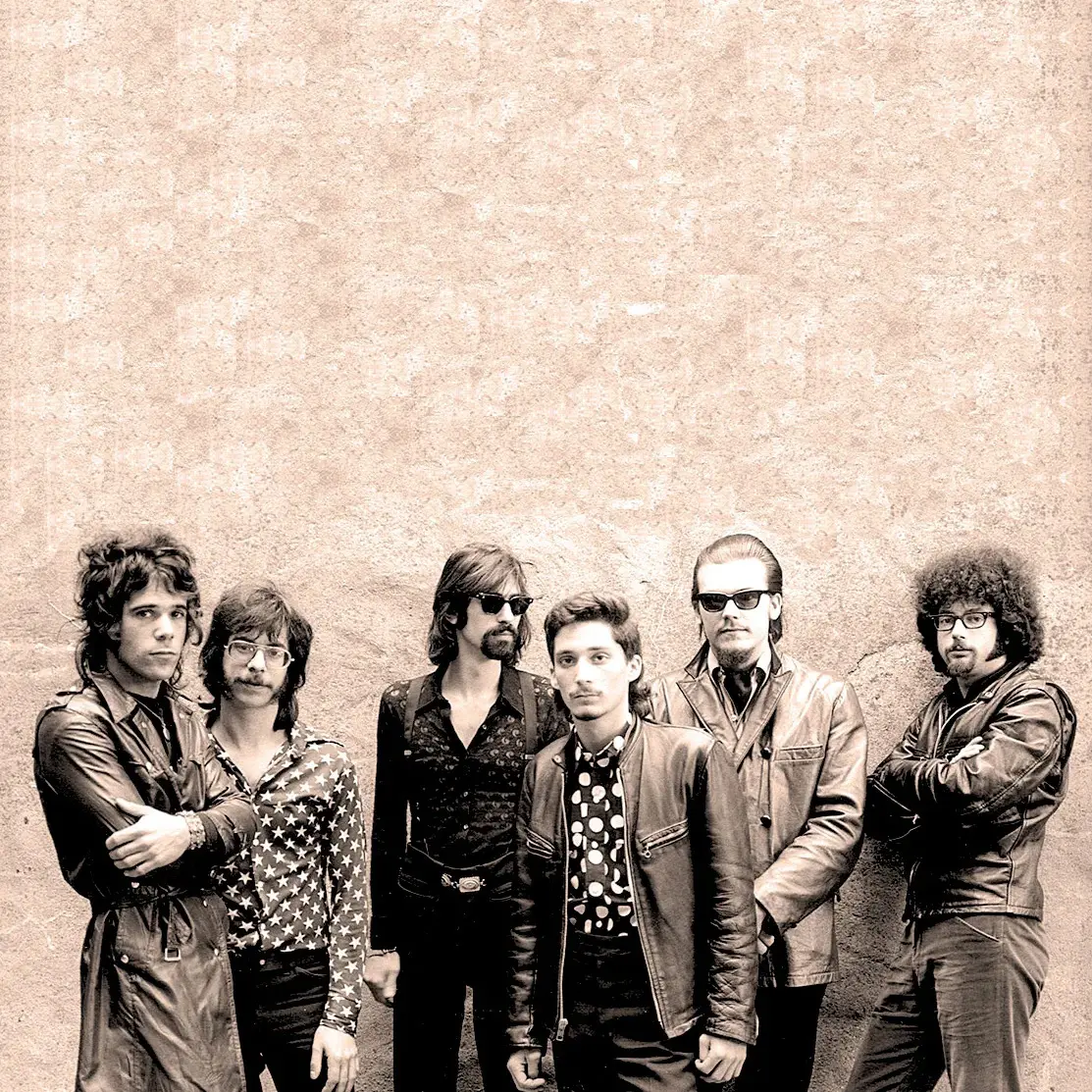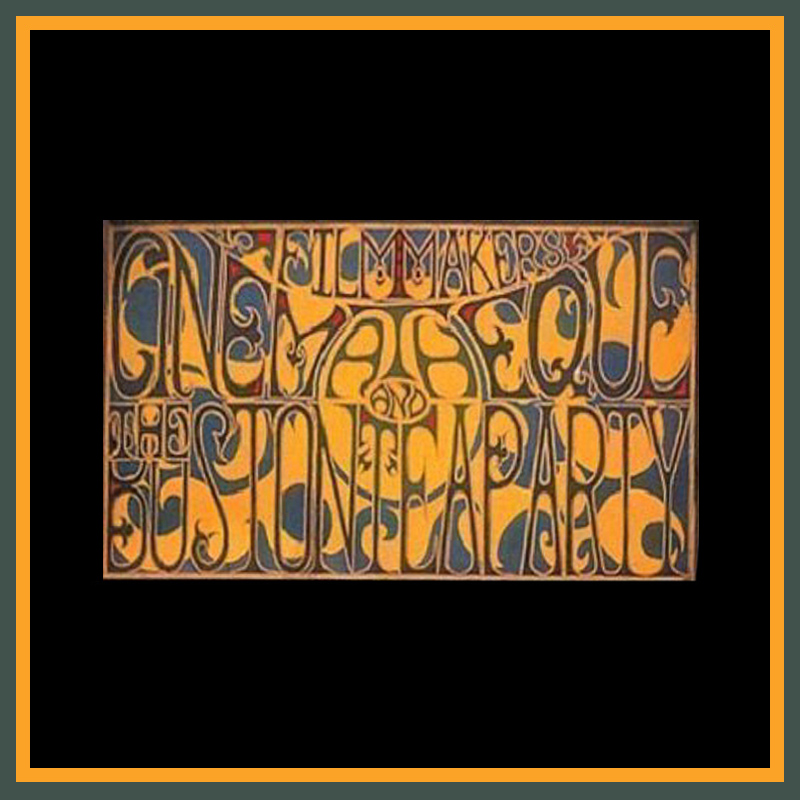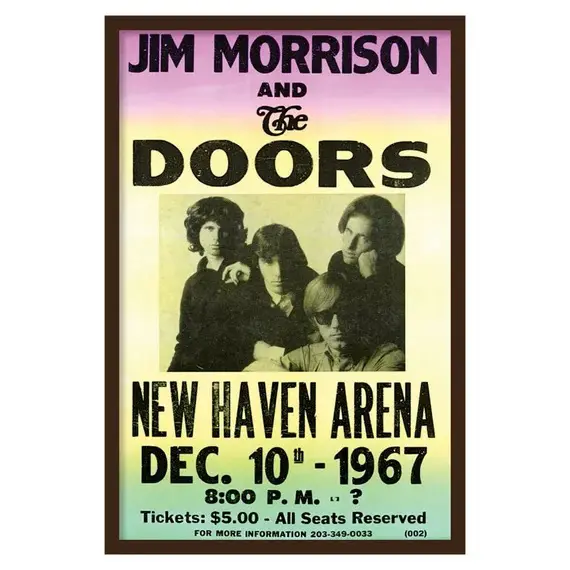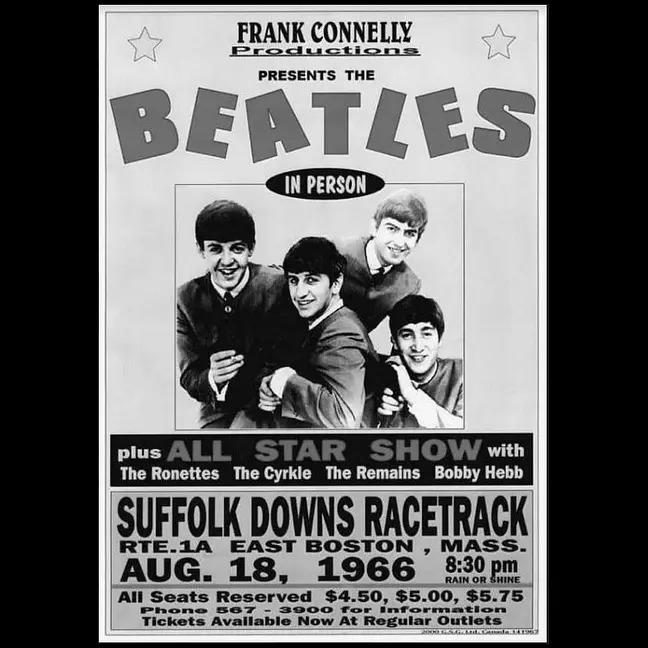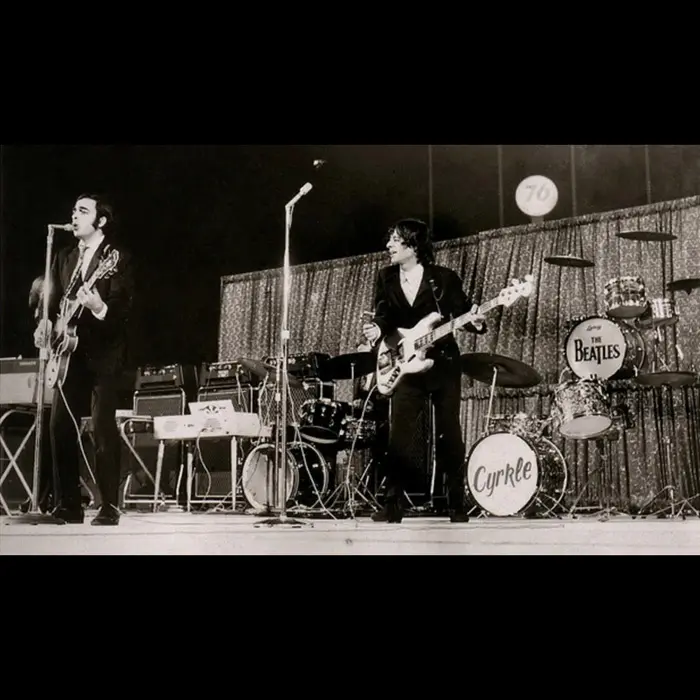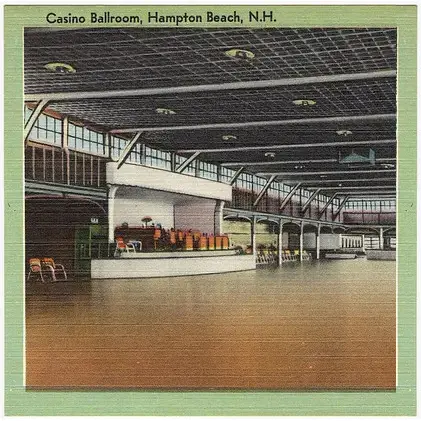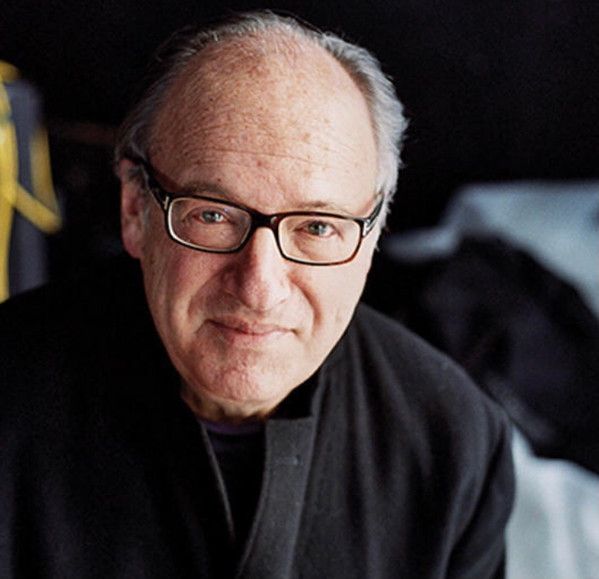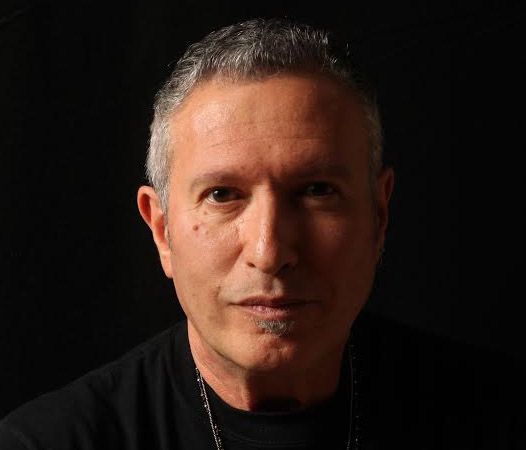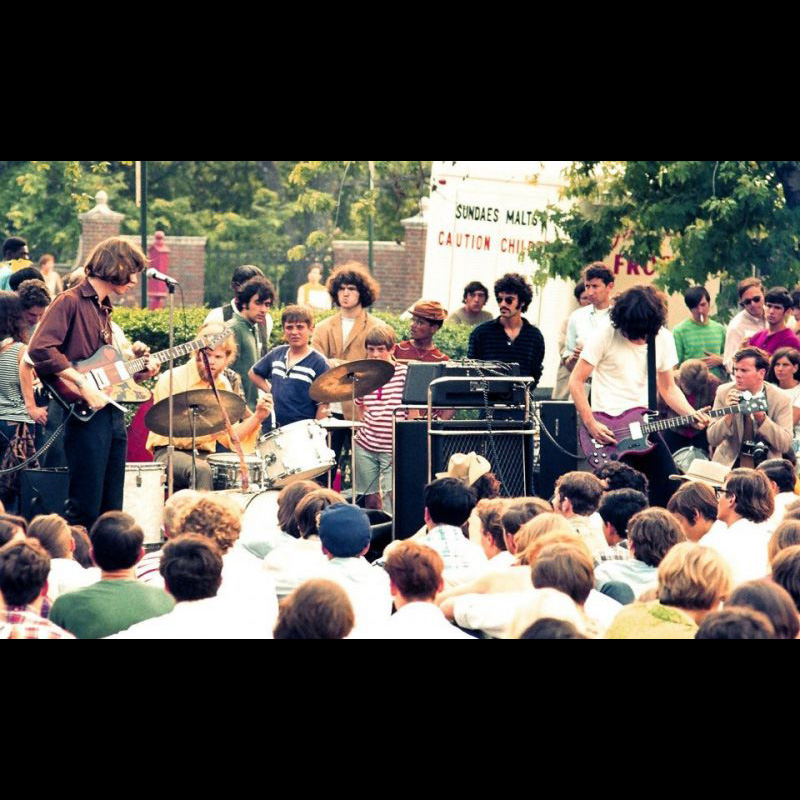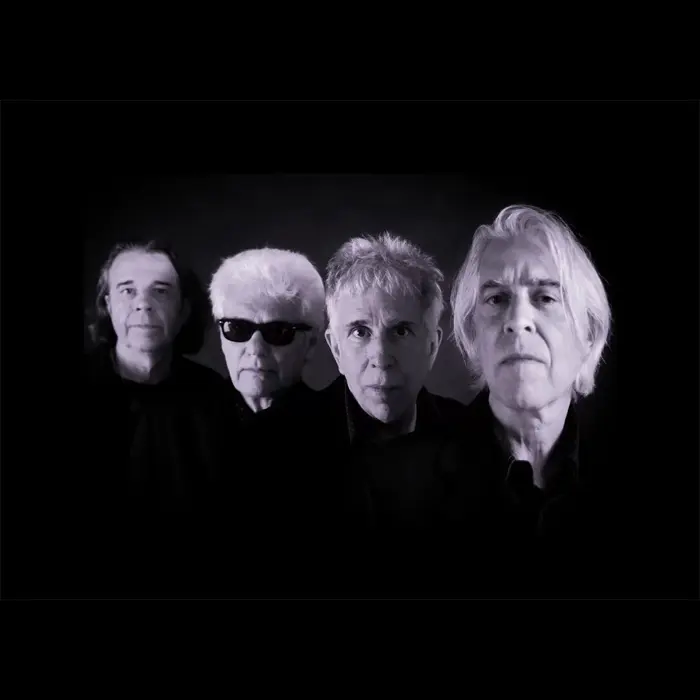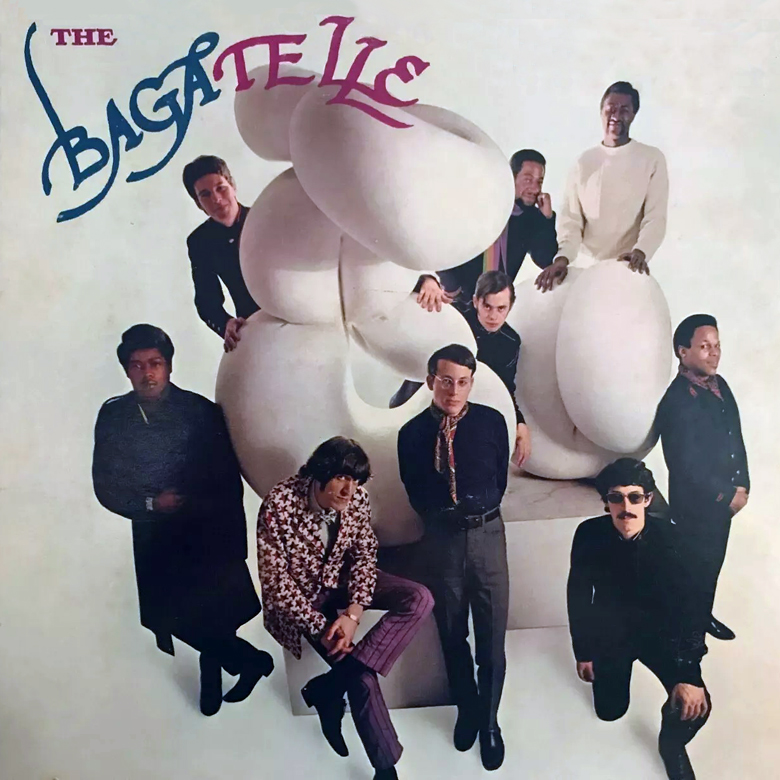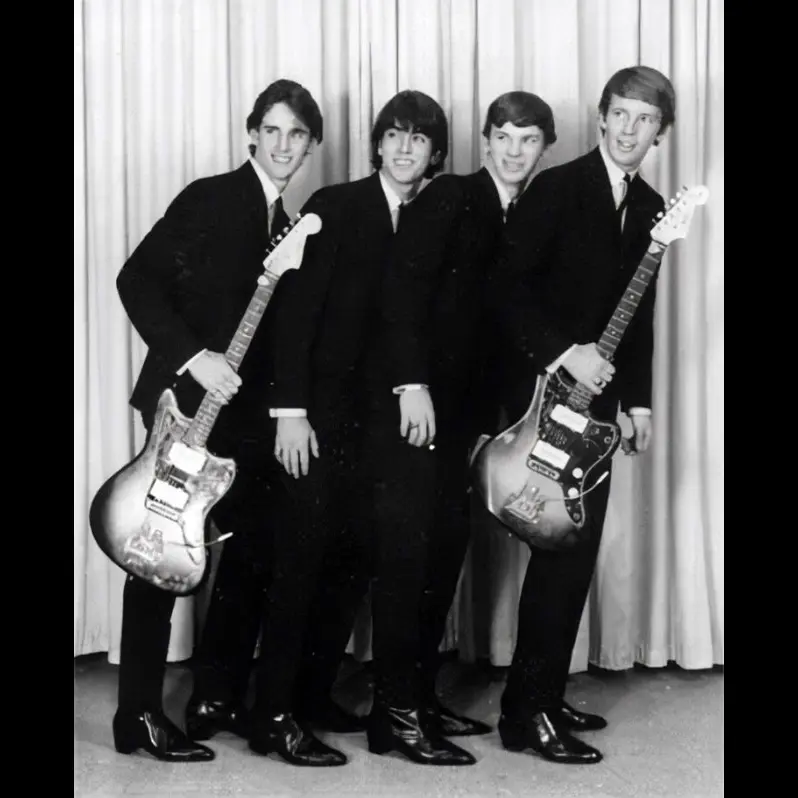Ultimate Spinach
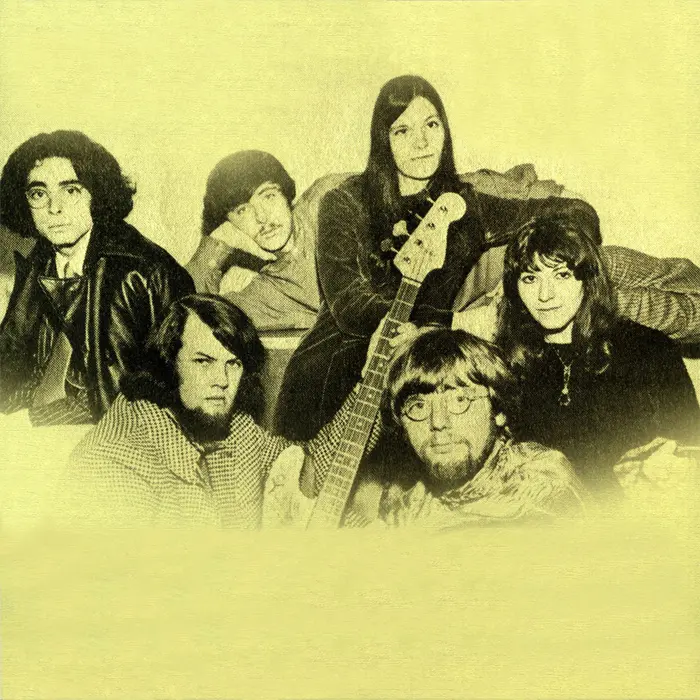
Of all the fanciful food-referencing psychedelic-rock band names that arose from the acid-soaked late ‘60s – The Chocolate Watchband, Strawberry Alarm Clock, The Peanut Butter Conspiracy and The Apple Pie Motherhood Band among them – Ultimate Spinach is one of the trippiest and perhaps even, ahem, the ultimate in terms of far-out flippancy.
But don’t let the nonsensical-but-memorable moniker distract you from the overall significance of the group itself. Behind the absurdly amusing name – and the love beads, paisley patterns and tie-dyed t-shirts that were de rigueur for the era – was a collaboration of creatives who were supremely serious about their craft and were among the premier purveyors of the Bosstown Sound initiative along with Earth Opera, Orpheus, The Beacon Street Union, Chamaeleon Church and Ill Wind. As testimony to the ferocity of their chops, one of the band’s later members, Jeff “Skunk” Baxter, co-founded Steely Dan in 1972 and joined The Doobie Brothers in 1974, a quintessential example of how ’60s-era psychedelia morphed into ‘70s-era mainstream.
Formation, Management, First Gigs, First Demos, Influences
The group formed in early 1967 as Underground Cinema, a quintet consisting of multi-instrumentalist and chief songwriter Ian Bruce-Douglas, vocalist Barbara Hudson, rhythm guitarist Geoff Winthrop, drummer Keith Lahtenein and bassist Richard Nese. Represented by Amphion Management, they became one of the house bands at Boston’s Unicorn Coffee House (along with The J. Geils Band, Ill Wind and Streetchoir) and recorded a number of demo tracks that year at Petrucci & Atwell Studios in Boston (which became Intermedia Sound Studios in 1971), three of which were included on Arf! Arf! Records’ 1996 compilation New England Teen Scene: Unreleased! 1965-1968.
Frontman Bruce-Douglas – credited for vocals, electric piano, harpsichord, organ, 12-string guitar, sitar, harmonica, flute, theremin and celesta on Ultimate’s debut album – has said his earliest musical influences were classical, jazz legends like John Coltrane, Cannonball Adderley, Charlie Mingus and Miles Davis, early R&B groups, The Ventures, Jerry Lee Lewis, Buddy Holly, The Everly Brothers and Duane Eddy. “I absolutely hated Elvis,” he said in 2011, citing traditional African, Native American, Japanese and Chinese music as other parts of his musical diet.
Alan Lorber, Name, MGM, Debut Album, Response to Debut Album
In September 1967, after playing at The Boston Tea Party in July, Underground Cinema signed with impresario Alan Lorber, originator of the Bosstown Sound concept, who produced each of the group’s three albums. After changing their name to Ultimate Spinach – an image from one of Bruce-Douglas’ acid trips – they signed with MGM and recorded their debut LP, a collection of nine originals (all written by Bruce-Douglas), at Bell Sound in New York City. In what some saw as cheap commercial ploy to mimic the success of “the San Francisco Sound” personified by Hot Tuna and Moby Grape, Lorber’s stated goal, as he wrote in the liner notes of the album’s reissue, was to make Boston his “target city for the development of new artists from one geographical location.”
Released in early January 1968, the self-titled anti-war concept album – lyrically dark and ominous – reached #34 in the Billboard 200 but received mixed reviews. Some critics called it a half-baked attempt to copy The Doors, Jefferson Airplane and Country Joe & the Fish while others said tracks like “Plastic Goddess” and “(Ballad of) The Hip Death Goddess” represented a welcome expansion on The Beatles’ and The Kinks’ recent musical directions. In late January, Newsweek published a Lorber-penned article about the Bosstown Sound while Ultimate toured the US, including a gig as the headliner at the Hampton Beach Casino Ballroom and another as the opener for Big Brother and the Holding Company at the Filmore West in San Francisco.
Despite the LP’s impressive commercial success, Bruce-Douglas was incensed by what he perceived as Lorber’s dictatorial approach to production, especially by his refusal to allow him to take part in the mixing process. “’The Parasite’ took [my song] ‘Pamela’ and completely changed it around, including adding the Bach intro,” he said in 2011, using the nickname he assigned to Lorber decades ago. “Then he screwed me over, because before we signed with him he promised me that I would be involved with the mixes, which was very important to me since I knew how I heard the finished product in my head. But when we were done recording [at Bell Sound Studios in New York], he told me to go back to Boston. Period. That really upset me. From that point on, things went downhill.”
Lineup Changes, Behold & See, Response to Behold & See
Immediately after recording the debut album, drummer Lahtenein left the group, replaced on the supporting tour by Russell Levine, who appears on Ultimate’s second LP with newly added vocalist Caryl Lee Britt. Sessions for their sophomore effort began in April 1968 at Mayfair Recording Studios in New York and Bruce-Douglas has called making the record “a nightmare,” because he wrote most of the songs in the studio between takes and “the rest of the band and I weren’t even talking to each other anymore.” After 10 days of recording, the result was another concept album, Behold & See, which eked its way into the Billboard 200 at #198 after its release in August that year.
Unlike the debut, the second album didn’t include electric keyboards, which some critics said limited its acoustical thrust. As the Bosstown Sound idea started losing its short-lived traction – to many, what initially seemed innovative now appeared plagiaristic – reviews were mixed again, with Rolling Stone’s Jon Landau writing it off as “pretentious” and Richie Unterberger later calling it a “slightly more subdued continuation of the derivative psychedelia in their debut” and “a hack take on West Coast groups”; others championed the LP’s nearly 10-minute epics “Genesis of Beauty” and “Mind Flowers” as potent blends of hymn-like seduction and guitar-fuzz fury.
Bruce-Douglas Quits, Lineup Revised, Ultimate Spinach III
Frustrated by lineup turmoil and ready to come to blows with Lorber at any given moment, Bruce-Douglas left the band shortly after Behold & See’s release. “I got thoroughly disgusted with my personal ‘Frankenstein’s monster’ and quit,” he said in 2011. Under contract with MGM for a third album, Lorber – who owned the rights to the name “Ultimate Spinach” – formed the revised lineup of vocalist/guitarist Ted Myers (formerly of The Lost and Chamaeleon Church), keyboardist/guitarist Tony Scheuren (also formerly of Chamaeleon Church), lead guitarist Jeff “Skunk” Baxter, original member Barbara Jean Hudson on vocals and rhythm guitar, bassist Mike Levine and drummer Russell Levine.
In December 1968, the group recorded their final album, Ultimate Spinach III, at Mayfair and MGM released it in early 1969. With Bruce-Douglas out of the picture, Myers and Scheuren wrote most of the material and the LP represented a nearly 180-degree turn from the musical and lyrical experimentation of Ultimate’s previous outings. Ultimate Spinach III failed to chart and the vast majority of reviews were tepid at best, many commenting on the LP’s stylistic inconsistency; Unterberger has called it “a pretty marginal effort, not particularly worth finding even if you’re a psychedelic collector.”
Reissues, Compilations, Live at the Unicorn
In the 1990s, Big Beat Records reissued all three Ultimate albums and in 1996 the label released Bosstown Sound, 1968: The Music & The Time, a two-CD, 37-track compilation of material from Ultimate Spinach, Orpheus, Earth Opera, Eden’s Children, Apple Pie Motherhood Band, Front Page Review, Ill Wind, Chamaeleon Church, The Bagatelle, The Beacon Street Union and The Rockin’ Ramrods.
In 2001, the Varèse Vintage label issued The Very Best of Ultimate Spinach and in 2006 Iris Musique released the five-song CD Sacrifice of the Moon: Instrumental Music of Ultimate Spinach. In 2008, 50 years after its release, the band’s debut album appeared at #38 in Classic Rock magazine’s “42 Greatest Psychedelic Albums” list. In 2014, Keyhole Records released Live at the Unicorn, July 1967, recorded two months before the group signed with Alan Lorber.
Bruce-Douglas’ on the ‘60s, Current Rock, Pop
Asked in 2011 about his thoughts on being part of the ‘60s scene and the sound of 21st-century rock and pop, Bruce-Douglas proved his reputation as one who never minces words. “The ‘60s was an incredible time to come of age, but I doubt we will ever see anything like it again,” he said. “Want proof? Listen to the shit that passes for pop music these days. Creativity and independent thinking are not encouraged. We have become a nation of sheep. Can you say ‘b-a-a-a-a-a’?”
(by D.S. Monahan)

